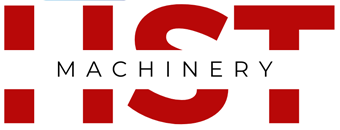BLOG
Our aim is to provide customers with professional project management and product manufacturing solutions
Steel Structure Manufacturing Process: Key Steps and Techniques
Steel structure manufacturing is a complex process that requires precision, efficiency, and quality control. The process involves multiple stages, each playing a crucial role in ensuring the durability and reliability of the final structure. Below are the key steps in steel structure manufacturing:
1. Material Preparation
The first step involves selecting high-quality raw materials, primarily structural steel, based on the design specifications. The selected steel is then inspected for defects such as cracks, rust, or inconsistencies. Additional materials such as bolts, welding consumables, and protective coatings are also prepared at this stage.
2. Cutting and Shaping
Once the raw materials are ready, they are cut and shaped according to the project’s blueprint. Common cutting methods include:
Plasma Cutting: Ideal for high-precision cuts, especially for thick steel plates.
Laser Cutting: Offers high accuracy and clean edges, suitable for complex designs.
Oxy-Fuel Cutting: Used for thicker materials where precision is less critical.
Shearing and Sawing: Applied to smaller sections and beams.
Bending and rolling processes may also be applied to shape steel into desired forms, such as curves and angles.
3. Welding and Assembly
After cutting and shaping, the steel components are welded together to form structural sections. Welding is a critical process that ensures structural integrity. Common welding methods include:
MIG (Metal Inert Gas) Welding: Fast and efficient for thick steel sections.
TIG (Tungsten Inert Gas) Welding: Provides high-quality welds for precise applications.
Arc Welding: Cost-effective and commonly used for large-scale projects.
During assembly, pre-fabricated components are fitted together to check for accuracy before final welding.
4. Surface Treatment and Coating
To enhance the durability and resistance of steel structures against corrosion and environmental factors, surface treatment is applied. Common methods include:
Sandblasting: Removes rust and impurities, preparing the surface for coatings.
Galvanization: Provides corrosion resistance by coating the steel with a layer of zinc.
Painting and Powder Coating: Adds an additional protective layer and improves aesthetics.
5. Final Assembly and Quality Inspection
Before shipment, the steel structures are fully assembled to ensure proper alignment and fit. Quality inspections, including dimensional checks, load testing, and welding inspections, are carried out to meet industry standards. Any necessary adjustments or corrections are made at this stage.
6. Packaging and Transportation
Once all components pass quality control, they are carefully packed for transportation. Proper packaging prevents damage during transit. Depending on the project location, steel structures may be transported via trucks, ships, or rail.
Conclusion
Steel structure manufacturing is a meticulous process requiring advanced machinery, skilled labor, and strict quality control measures. By following these key steps, manufacturers can produce durable and efficient steel structures that meet various industrial and commercial demands.
Prev : Nothing
Next : Quality Control and Inspection Methods in Steel Structure Manufacturing


